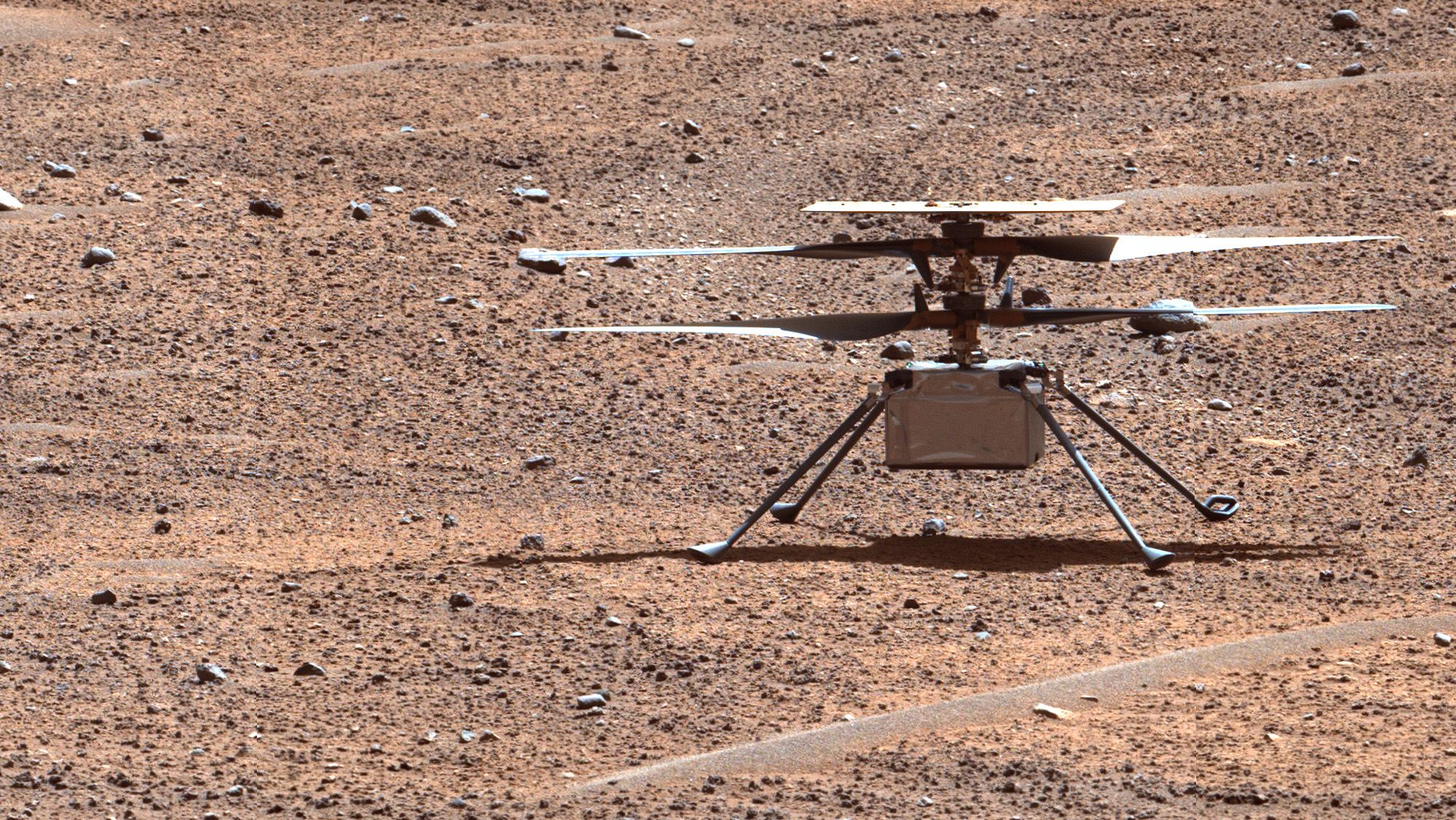There have been numerous robotic space missions reach the end of their operating life over the years and for a multitude of reasons. Be they catastrophic failure or a scheduled end but I must say one that has recently made me a little sad is the demise of the Ingenuity helicopter on Mars. It sustained damage after its recent flight and can now no longer fly. In a mission that was supposed to complete five flights in 30 days, the plucky little helicopter completed 72 flights over three years!
The Ingenuity helicopter’s historic journey began on 18 February 2021 when it arrived on Mars. It was transported as part of the Mars 2020 mission which included the Perseverance rover too. Ingenuity had been built by NASA Jet Propulsion Laboratory with involvement from AeroVironment Inc., Qualcomm, SolAero and Lockheed Space. The task for Ingenuity was a simple one, to demonstrate the technology to perform flights on another world.

Once setup for flight, it stood 0.49 metres tall and its rotors had a span of 1.2 metres. This may seem a large wingspan in comparison to drones here on Earth but they needed to be this long to achieve flight on Mars. The lower atmospheric density meant that larger rotors were needed to produce the required amount of lift. The blades were to spin at a rate of 2,400 revolutions per minute but there were two drives that would spin one set of blades clockwise and the other counterclockwise. At the very top, above the rotors was a solar panel to charge its batteries, there was a wireless communication system and of course navigation sensors and cameras.
The first flight took place on 19th April in the same year proving for the first time that powered flight was possible on another world. In the flights that followed, the operations team tested its systems and used it to scout out locations for the Perseverance rover to explore in detail.
The plan was for Ingenuity to only last 3 days during the spring of 2021 and so the team had to overcome a number of obstacles during its extended mission. The teams had to develop winter operating procedures so that Ingenuity could survive the long cold nights. They upgraded the systems giving it the ability to choose its own landing sites and even had to clean itself after dust storms.
On the 18th January this year, the team had to identify the location of Ingenuity since it had to make an emergency landing on a previous flight. As planned, the helicopter lifted off to an altitude of 12 metres to survey the surrounding terrain and hovered for 4.5 seconds before descending again at a velocity of 1 metre per second. Unfortunately and for unknown reasons, there was a communication failure at an altitude of about 1 metre. Investigations the following day revealed there was damage to one of the rotor blades rendering the helicopter incapable of further flight.
The team are now trying to identify the cause of the failure while they perform tests on the systems one last time and download the last images stored onboard. Too often we hear of missions that go wrong but Ingenuity was a fabulous example of a mission that went way beyond its expectations giving us so much more than was ever hoped for.
Source : After Three Years on Mars, NASA’s Ingenuity Helicopter Mission Ends
Link :

